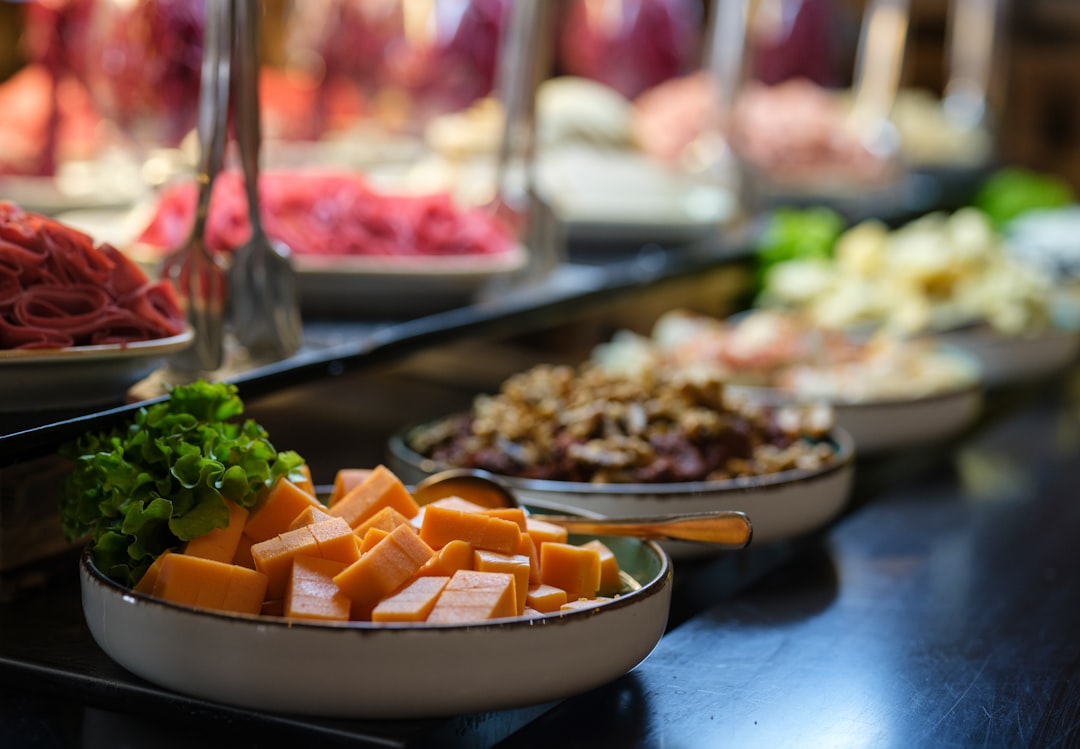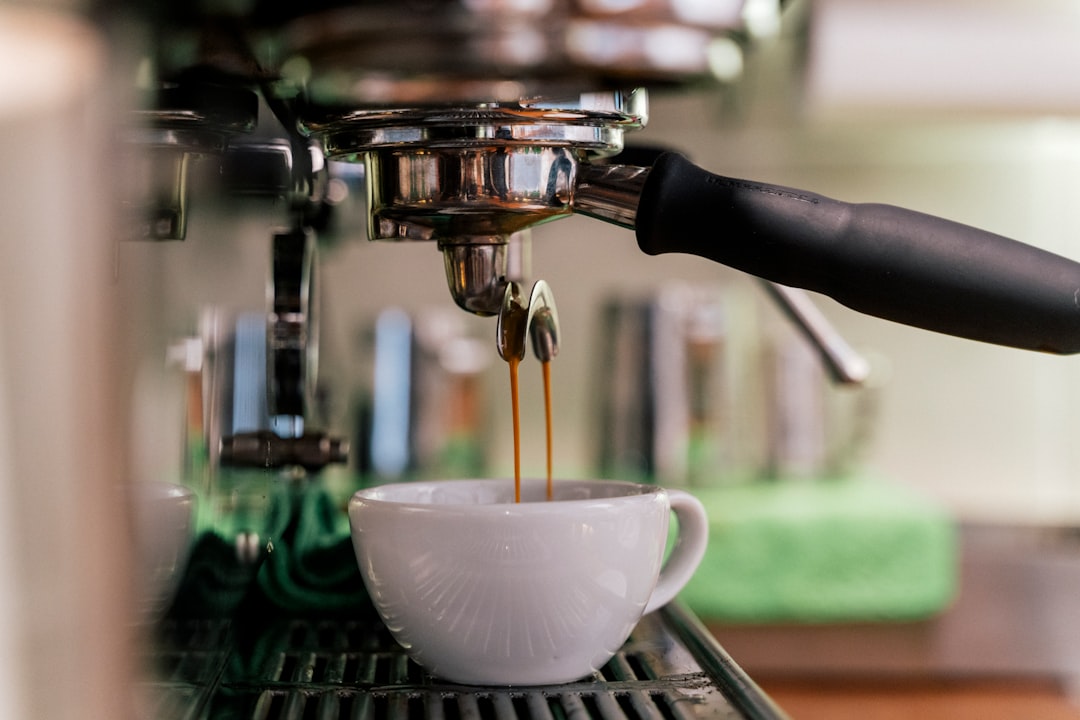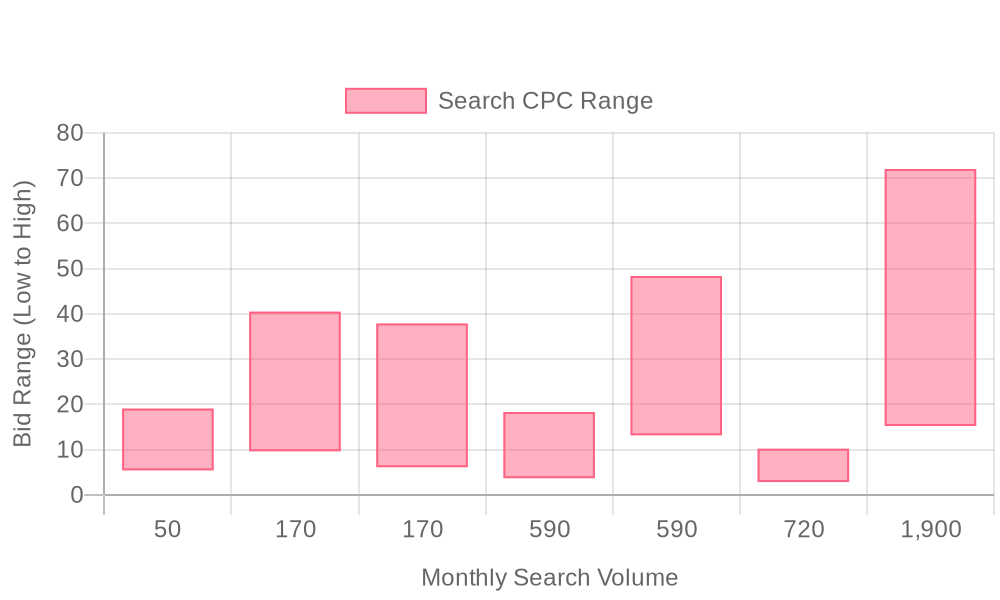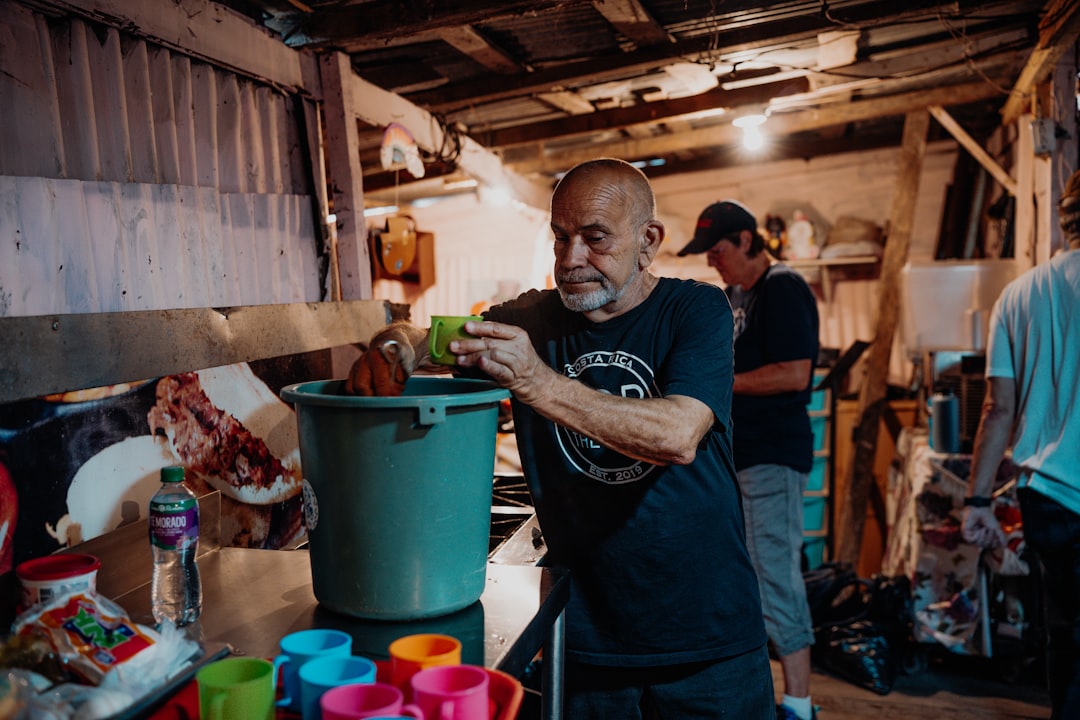
Supercharge your lead generation with a FREE Google Ads audit - no strings attached! See how you can generate more and higher quality leads
Get My Free Google Ads AuditFree consultation

No commitment
Supercharge your lead generation with a FREE LinkedIn Ads audit - no strings attached! See how you can generate more and higher quality leads
Get My Free Google Ads AuditFree consultation

No commitment
Supercharge your lead generation with a FREE Meta Ads audit - no strings attached! See how you can generate more and higher quality leads
Get My Free Google Ads AuditGet My Free LinkedIn Ads AuditGet My Free Meta Ads AuditFree consultation

No commitment
Supercharge your lead generation with a FREE Google Ads audit - no strings attached! See how you can generate more and higher quality leads
Get My Free Google Ads AuditFree consultation

No commitment
In today's food service landscape, leveraging digital marketing tools is crucial to staying competitive. While offline strategies like menu tastings and in-person events create personal touchpoints, online tactics, particularly Google Ads, allow food service managers to target potential customers during their search for dining options. This becomes especially essential in competitive environments where visibility is key. Without insights into anonymous traffic on your website, potential leads may slip away unnoticed. Modern analytics tools can now help identify these visitors, transforming them into actionable leads to ensure well-targeted advertising. Google Ads serves as a bridge between your restaurant's awareness efforts and customer acquisition, enabling precise targeting and detailed performance tracking. For food service businesses, it represents an opportunity to position yourself front and center when customers are actively searching for dining solutions.

Modern food service management teams require precision and speed to attract, convert, and retain valuable leads. Relying on broad messaging or slow manual processes often results in missed opportunities and wasted ad spend. Explore how restaurants can leverage Google Ads to attract more customers and increase reservations, and consider turning website visits into qualified leads for more targeted sales outreach.
This step-by-step guide gives food service operators a framework to harness Google Ads for high-quality lead generation. By applying data-driven insights, dynamic targeting, and seamless cross-channel integrations, teams can consistently drive measurable growth and maximize campaign ROI. If you're ready to transform your approach, get started for free with Sona and see how integrated solutions can accelerate your campaigns.
Food service marketers face the challenge of reaching diverse customer segments, each with unique needs and purchase cycles. Leveraging granular data from Google Ads ensures every dollar is spent engaging prospects with the highest likelihood of converting. Analytics platforms can reveal which keywords, locations, and times of day deliver the best engagement, equipping teams to refine their strategies with confidence.
Integrating all go-to-market data into a single view enables a more holistic approach to campaign performance. For example, when visitor identification tools are in place, marketers can move beyond anonymous web traffic and attribute high-value leads to specific companies or buyer profiles. This clarity allows for timely, tailored follow-up that accelerates deal velocity and reduces lead cooling.
Effective lead generation in food service management depends on targeting the right audience with the right message at the right moment. Selecting targeted keywords for restaurants and food distributors—such as “bulk food delivery,” “event catering services,” or “institutional food supply”—ensures ads surface for searches with strong commercial intent. For a step-by-step guide to setting up Google Ads for restaurants, focus on audience targeting that segments prospects based on industry, company size, buyer intent, and recent engagement.
As leads interact with website content, advanced platforms like Sona Audiences can dynamically update audience lists to reflect real-time intent signals. This enables ad budgets to shift automatically toward high-converting accounts, while suppressing spend on cold or irrelevant segments. Marketers benefit from adaptive campaigns that reflect the latest customer activity, ensuring every touchpoint is relevant and impactful.

Landing page experience is central to converting food service leads into qualified opportunities. A well-aligned landing page builds trust by delivering on the promise of the ad—whether that means showcasing menu options, bulk order incentives, or downloadable product guides for institutional buyers. Consistency in messaging and design minimizes friction, guiding visitors smoothly from ad click to inquiry or purchase.
Integrating CRM and marketing automation tools allows teams to personalize landing page content for segmented audiences. As enriched lead and account data syncs automatically across channels, food service operators can trigger custom offers or nurture sequences tailored to each prospect’s needs. This alignment between creative, landing page, and follow-up increases conversion rates and drives sustainable growth.
The most effective food service marketing teams treat Google Ads as an iterative engine, not a set-and-forget channel. Continuous optimization—driven by real-time performance data and advanced analytics—unlocks incremental gains in cost efficiency and lead quality. Key metrics such as click-through rate, conversion rate, and customer acquisition cost guide decision-making and budget allocation. For best practices and strategies, reference this Google Ads ROI guide for restaurants.
Advanced conversion tracking connects ad engagement to both online and offline outcomes, providing a comprehensive view of ROI. Platforms that unify attribution data across the sales funnel empower food service managers to double down on top-performing segments, creative, and channels. Over time, this data-driven approach yields compounding improvements in campaign effectiveness and revenue impact.

Food service decision-makers do not operate in silos, and neither should your marketing efforts. Integrating Google Ads with other digital and offline channels—such as email, social media, and industry events—creates a cohesive brand presence and maximizes every lead touchpoint. For a deeper understanding, review this analysis of foodservice advertising and branding. Cross-channel orchestration ensures that prospects experience consistent messaging and are engaged wherever they are in the buying process.
A unified data layer allows for seamless audience and lead syncing between Google Ads, CRM, and sales platforms. As leads move through the funnel, dynamic audiences can be updated in real time, ensuring that remarketing and nurture efforts remain aligned with each prospect’s stage and intent. This comprehensive integration delivers both broader reach and higher personalization, driving stronger results for food service management teams.
Digital marketing in food service management requires more than broad outreach. Precision targeting with Google Ads empowers marketers to reach decision-makers during critical windows, capturing hungry diners, event planners, or procurement officers at the exact moment they are searching for a better experience or new supplier. For an overview of how restaurants can leverage Google Ads to attract more customers, review this beginner’s guide to Google Ads for restaurants.
Tailored campaigns allow food service brands to address complex audience needs, such as diners dissatisfied with past experiences or institutional clients seeking new vendors. By customizing messaging and offers, campaigns avoid wasted impressions and drive engagement from high-potential leads ready to act.
The fast-paced nature of the industry means that timing is everything. Google Ads delivers rapid results, whether during a lunch rush or a limited-time promotion, by surfacing relevant ads to users with immediate intent. This agility ensures restaurants and suppliers are top-of-mind when customers are ready to make decisions.
As food trends and dining districts evolve, Google Ads makes it possible to quickly test and scale visibility in emerging markets. Marketers can focus spend on neighborhoods or verticals showing the most promise, optimizing reach and return without guesswork.
Robust data integration supports smarter analytics, connecting every click to downstream actions like reservations, purchases, or qualified leads. Platforms that unify campaign data with CRM and sales systems enable a closed-loop view of performance, allowing managers to make informed, real-time decisions about where to allocate budget for the highest impact. If you’re ready to optimize your digital strategy, get started for free with Sona.

Food service management teams gain a competitive edge by moving beyond conventional keyword strategies and uncovering growth opportunities in new customer segments. Precision targeting and real-time audience analysis enable leaders to address persistent challenges like flat engagement and diminishing returns, all while allocating spend where it counts most. Get started for free with Sona.
Effective audience segmentation empowers food service marketers to deliver relevant messaging at every stage of the customer journey. Instead of generic outreach, segmentation enables campaigns to reflect specific dining habits, preferences, and purchase triggers, driving engagement and conversions with measurable precision. For actionable frameworks on campaign measurement, explore this guide to measuring marketing’s influence on the sales pipeline.
Defining audience segments starts with understanding the core differences between fast-casual and fine dining patrons. Fast-casual customers often prioritize convenience, value, and speed, responding well to limited-time offers or mobile ordering incentives. Fine dining audiences, in contrast, seek exclusivity, ambiance, and curated experiences, making them more receptive to reservation perks or chef-driven event promotions. By aligning ad groups and creative assets with these distinct needs, campaigns avoid wasted impressions and maximize relevance—see a step-by-step guide to Google Ads for restaurants for practical implementation.
Overlaying intent signals further sharpens targeting. For example, users searching for "brunch near me" on weekends display different motivations than those seeking "dinner tasting menu" reservations. By segmenting based on time of day, meal occasion, and location, marketers can schedule ads and adjust budgets to capture high-converting, time-sensitive leads. Real-time intent monitoring allows campaign managers to dynamically reallocate spend as new search trends or local events emerge, ensuring the right offer appears at the right moment.
Crafting ad groups around these granular segments amplifies campaign performance. Each group receives tailored copy, creative, and calls-to-action reflecting the segment’s priorities—whether it’s highlighting quick pick-up for office lunches or showcasing farm-to-table sourcing for health-conscious diners. Sophisticated platforms further enhance these efforts by identifying site visitors and mapping them to company accounts, updating audience lists automatically as leads engage across touchpoints. When CRM data is integrated, enriched profiles sync seamlessly into active campaigns, allowing for precise retargeting and full-funnel attribution. This approach not only boosts food service customer acquisition but also provides a unified view of ROI across digital and offline channels, setting the stage for continuous optimization and growth. To unlock these capabilities, get started for free with Sona.

| Industry | Keyword | Monthly Search Volume | Competition Level | Low Bid | High Bid |
| Food Service Management | food management system | 50 | LOW | 5.43 | 19.07 |
| Food Service Management | digital food safety management system | 170 | LOW | 9.64 | 40.48 |
| Food Service Management | restaurant inventory management excel | 170 | HIGH | 6.11 | 37.86 |
| Food Service Management | food safety management system | 590 | LOW | 3.69 | 18.31 |
| Food Service Management | food inventory management | 590 | LOW | 13.17 | 48.36 |
| Food Service Management | food service management | 720 | LOW | 2.83 | 10.2 |
| Food Service Management | restaurant inventory management system | 1900 | LOW | 15.24 | 72 |
A robust keyword strategy lies at the core of successful Google Ads for Food Service Management, directly impacting campaign relevance and ROI. Prioritizing high-intent keywords such as "brunch spots near me" or "best catering service downtown" ensures your ads surface for prospective clients ready to make a decision. For a step-by-step breakdown of keyword selection and campaign setup, explore this Google Ads guide for restaurants.
Targeting buyer-ready terms not only boosts visibility but also shortens the sales cycle by connecting your business with customers at the moment of need. Incorporating local modifiers like "near me," neighborhood names, or city-specific phrases further sharpens targeting, driving higher conversion rates and ensuring ad budgets are focused on high-priority leads. For additional strategies on optimizing demand generation, visit our actionable playbooks.
When marketers unify search, site, and CRM data, they gain the ability to move beyond broad keyword lists and instead map specific pain points or intent signals to audience segments. For example, tracking searches for "private party rooms" or "late night food delivery" and linking them to website behavior allows real-time adjustment of ad spend toward the highest-converting prospects. This dynamic approach lets food service teams respond to shifting demand, allocate budget to the best opportunities, and maximize the return on every click.
Integrating visitor identification and CRM insights into keyword targeting means campaigns don’t just reach anonymous searchers—they engage known accounts and decision-makers who have already shown interest, elevating both personalization and performance. As leads move through your sales funnel, audience lists refresh automatically, ensuring ongoing relevance and eliminating wasted impressions on cold or closed accounts. Want to adapt your strategy as your business grows? Get started for free with Sona.
Precision campaign execution is critical for food service management teams looking to maximize digital advertising ROI. A systematic approach ensures each campaign stage moves prospects seamlessly from discovery to engagement and conversion, optimizing every advertising dollar. For a deeper dive into marketing attribution and analytics best practices, explore the Sona blog.
Teams who unify their audience, conversion, and account data see measurable gains in targeting accuracy and lead quality. Integrated workflows enable marketers to quickly adapt to demand shifts, capture high-intent buyers, and build a performance-driven digital acquisition engine with real-time audience segments.
A disciplined, data-driven execution framework gives food service management teams the flexibility to adapt, unify insights, and sustain acquisition momentum in a volatile market. Ready to optimize your campaigns? Get started for free with Sona.

Expanding your food service presence requires a blend of advanced digital tactics and a nuanced understanding of your target audience. B2B revenue teams that focus on actionable insights and unified data are positioned to engage decision-makers more effectively and drive measurable growth.
Cross-promotion of educational content through retargeting is a proven way to re-engage known stakeholders in the food service industry. By using retargeting campaigns, marketers reinforce value propositions and nurture prospects who have already shown interest in specific solutions. When visitor identification technology is layered in, anonymous traffic transforms into recognizable companies and individuals, making subsequent touchpoints more personal and relevant.
CRM integration unlocks powerful opportunities for audience-based upselling. Syncing enriched customer segments into advertising platforms like Google Ads allows for highly tailored messaging that addresses each segment's unique needs. As audiences update in real time, offers can evolve based on purchase history or in-market behavior, ensuring that campaigns remain relevant as customers move through the buying journey.
Localized ad strategies are essential in food service, where purchase decisions are often geographically bound. Targeting diverse demographics within specific regions ensures broad coverage without diluting relevance. For a step-by-step guide to setting up and optimizing Google Ads campaigns specifically for restaurants, review this Google Ads for restaurants guide. With unified audience data, teams can dynamically adjust campaigns to reach both established and emerging customer profiles, maximizing the impact of each ad dollar.
Finally, leveraging search data to guide content creation ensures that marketing assets align with the actual needs and preferences of your audience. By analyzing high-performing search terms and user queries, food service marketers can develop resources that address pain points and drive engagement. Continuous optimization based on integrated learnings across all channels enables you to attract high-quality leads and sustain long-term growth. Ready to take the next step? Get started for free with Sona.
In conclusion, leveraging Google Ads for your food service management business can significantly enhance your market visibility and drive customer engagement. By strategically employing ad targeting, crafting compelling ad copy, and optimizing your campaigns, you can attract more customers and increase sales in a competitive market.
We discussed several key challenges, such as standing out in a crowded marketplace and effectively reaching your target audience. By focusing on tailored ad strategies and data-driven insights, you can overcome these obstacles and achieve your business goals. Embracing these techniques allows you to tap into the power of Google Ads, positioning your business for success.
Imagine the possibilities when your food service business consistently reaches the right customers at the right time, resulting in increased foot traffic and higher sales. By implementing these strategies, you can transform your advertising efforts into a powerful growth engine for your business.
To experience these benefits firsthand, start for free and discover how our platform can elevate your advertising strategy and drive meaningful results.
Best practices include leveraging data-driven insights for precise targeting, integrating go-to-market data for a holistic view, and continuously optimizing campaigns based on performance metrics like click-through and conversion rates.
To create effective Google Ads, focus on targeted keywords with strong commercial intent, align landing pages with ad messaging, and use audience segmentation to tailor ads to specific customer needs and behaviors.
Target high-intent keywords such as 'bulk food delivery,' 'event catering services,' and 'institutional food supply,' and use local modifiers like 'near me' to enhance targeting.
Success can be measured by tracking key metrics such as click-through rate, conversion rate, and customer acquisition cost, as well as integrating conversion tracking for both online and offline outcomes.
Budget allocation should be guided by real-time performance data and analytics, focusing spend on high-performing segments and adjusting based on metrics such as conversion rates and customer acquisition costs.
Join results-focused teams combining Sona Platform automation with advanced Google Ads strategies to scale lead generation

Connect your existing CRM

Free Account Enrichment

No setup fees
No commitment required

Free consultation

Get a custom Google Ads roadmap for your business
Join results-focused teams combining Sona Platform automation with advanced Meta Ads strategies to scale lead generation

Connect your existing CRM

Free Account Enrichment

No setup fees
No commitment required

Free consultation

Get a custom Google Ads roadmap for your business
Join results-focused teams combining Sona Platform automation with advanced LinkedIn Ads strategies to scale lead generation

Connect your existing CRM

Free Account Enrichment

No setup fees
No commitment required

Free consultation

Get a custom Google Ads roadmap for your business
Join results-focused teams using Sona Platform automation to activate unified sales and marketing data, maximize ROI on marketing investments, and drive measurable growth

Connect your existing CRM

Free Account Enrichment

No setup fees
No commitment required

Free consultation

Get a custom Google Ads roadmap for your business
Over 500+ auto detailing businesses trust our platform to grow their revenue
Join results-focused teams using Sona Platform automation to activate unified sales and marketing data, maximize ROI on marketing investments, and drive measurable growth

Connect your existing CRM

Free Account Enrichment

No setup fees
No commitment required

Free consultation

Get a custom Google Ads roadmap for your business
Over 500+ auto detailing businesses trust our platform to grow their revenue
Join results-focused teams using Sona Platform automation to activate unified sales and marketing data, maximize ROI on marketing investments, and drive measurable growth

Connect your existing CRM

Free Account Enrichment

No setup fees
No commitment required

Free consultation

Get a custom Google Ads roadmap for your business
Over 500+ auto detailing businesses trust our platform to grow their revenue
Our team of experts can implement your Google Ads campaigns, then show you how Sona helps you manage exceptional campaign performance and sales.
Schedule your FREE 15-minute strategy sessionOur team of experts can implement your Meta Ads campaigns, then show you how Sona helps you manage exceptional campaign performance and sales.
Schedule your FREE 15-minute strategy sessionOur team of experts can implement your LinkedIn Ads campaigns, then show you how Sona helps you manage exceptional campaign performance and sales.
Schedule your FREE 15-minute strategy sessionOur team of experts can help improve your demand generation strategy, and can show you how advanced attribution and data activation can help you realize more opportunities and improve sales performance.
Schedule your FREE 30-minute strategy sessionOur team of experts can help improve your demand generation strategy, and can show you how advanced attribution and data activation can help you realize more opportunities and improve sales performance.
Schedule your FREE 30-minute strategy sessionOur team of experts can help improve your demand generation strategy, and can show you how advanced attribution and data activation can help you realize more opportunities and improve sales performance.
Schedule your FREE 30-minute strategy sessionOur team of experts can help improve your demand generation strategy, and can show you how advanced attribution and data activation can help you realize more opportunities and improve sales performance.
Schedule your FREE 30-minute strategy session





Launch campaigns that generate qualified leads in 30 days or less.
